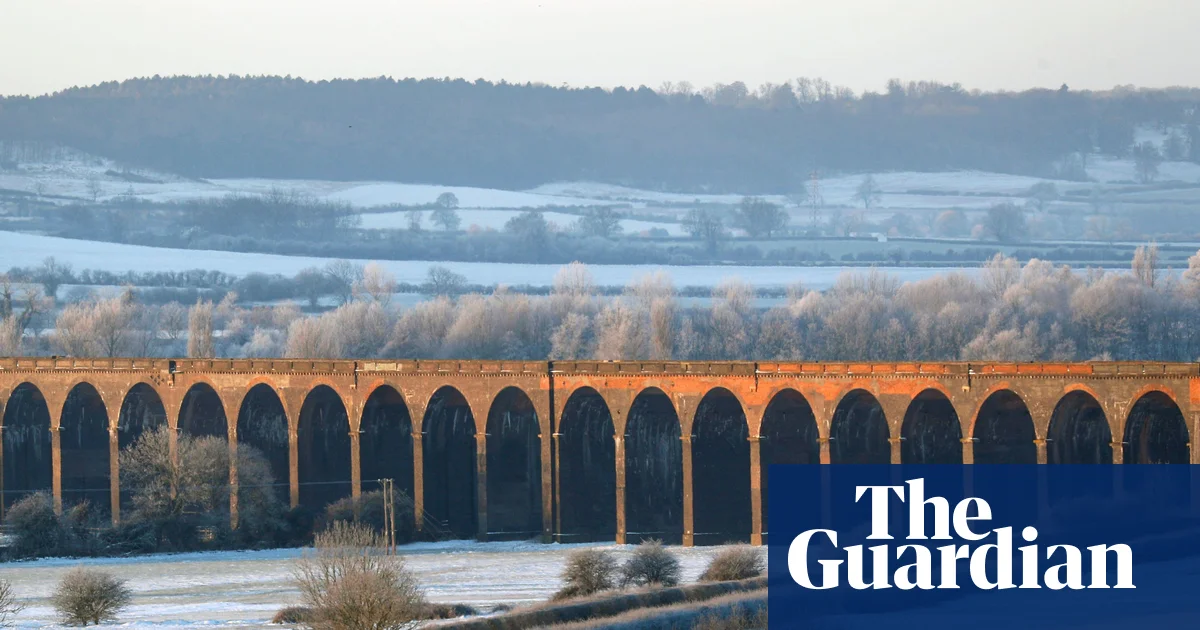‘An unsung alternative to the Cotswolds‘: exploring Leicestershire’s Welland valley | England holidays
It was a chilly Sunday in November 2000 when the gods chose to smile on Ken Wallace. The retired teacher was sweeping his metal detector across a hillside in Leicestershire’s Welland valley when a series of beeps brought him up short. Digging down, he found a cache of buried coins almost two millennia old. He had chanced upon one of the UK’s most important iron age hoards, totalling about 5,000 silver and gold coins.
More than 25 years on, I’m staring at Ken’s find at the civic museum in the nearby town of Market Harborough. The now gleaming coins are decorated with wreaths and horses. They’re about the size of 5p pieces, but speak of a wild-eyed age of tribal lands and windswept hill forts.
Hidden riches are something of a local theme here. The treasure was unearthed close to the Leicestershire-Northamptonshire border, in a sloping, sheep-dotted landscape where the River Welland ribbons eastwards in no special hurry. The town (“people just call it Harb”, one of the museum staff tells me) is the main settlement in this stretch of the valley. I’ve come here on a short winter visit to see why the area – hills, villages, Harb and all – gets described as an unsung alternative to the Cotswolds.
The town itself has ancient Saxon roots and is easy to like, with a head-turning mix of Jacobean, Georgian and Victorian architecture. I stumble on Quinns, a cracking independent bookshop tucked down an alleyway, then devour a curry bowl at a lively cafe called Two Old Goats. A board on the street lists notable town residents through the ages, the most recent being rugby giant Martin Johnson. I read this, then turn and immediately see him on the pavement 10 metres away. It’s unclear if this clever routine is something he does for all visitors, but he’s hard to miss in any case.
The real pull of the Welland valley is the countryside, a slow-moving world of hushed green dales and drifting red kites. On local advice, I head to rural Foxton Locks – Britain’s highest combination of staircase canal locks, where 10 adjacent early 19th-century locks transport boats up and down a 23-metre hillside – for a gawp and a wander. “It takes 50 minutes for boats to get from one end to the other,” says volunteer Malcolm, who seems delighted to have a visitor to talk to. The neatly painted locks rise up handsomely beside us.
You need a decent woolly hat to go gongoozling (that is, canal-watching) in December, but there are rewards to be had. The skies are already fading to a wintery grey when I climb past the locks to the upper towpath. The narrowboats I see are moored up, their chimneys smoking and their roofs decorated with bums-out gnomes. I walk the path for an hour of rippled quietude, passing little other than moorhens and blackthorn sloes, then return the same way.
Back at the locks I stop at tiny canalside pub Bridge 61, where I find a crackling log grate and a row of Camra certificates. The barman pours me a Widebeam bitter from Langton Brewery. “Local ale,” he says. “From three miles up the way as the crow flies.” Proof, it turns out, that beer doesn’t have to travel far to hit the spot.
My base is nearby Medbourne, one of numerous placid, calendar-pretty villages that stud the Welland valley. Medbourne has a clear stream, a lovely pub – the Nevill Arms, where I spend the night in a four-poster and enjoy exactly the kind of warming, candle-lit dinner you’d want from a country inn in winter – and cottages built of tough, reddish Leicestershire ironstone.
The next morning I meet local author and poet Tim Relf for a three-hour footpath ramble in the hills. Crossing stiles and ridge-and-furrow fields, he leads us to a spot above his home village of Drayton, from where the valley’s rolling green folds reveal themselves to the full. “You can make out six churches from here,” he says. He’s right. Their medieval spires punctuate a view that tumbles out for miles in all directions.
Drayton itself is home to the smallest of these churches, a stone chapel with pews that seat about 25 people. It once spent time as the village bakery and still has a bricked-up serving hatch. “The vicar likes joking about the fact that Bethlehem translates as ‘House of Bread’,” Tim smiles.
Close by, they’re used to far bigger crowds at the hilltop Nevill Holt Hall. In early summer, the Grade I-listed hall draws thousands of opera and music lovers for its annual arts festival, though when we pass it on this midweek December morning its trimmed lawns and topiary are as quiet as everywhere else.
We finish in Great Easton, another village of thatched roofs and wide lanes. It has a little cafe, aptly called the Great, where I refuel on coffee and sticky spiced ginger cake before heading to Eyebrook reservoir on the village outskirts. It’s a glorious spot for winter birding – teal, wigeon and great white egrets in the shallows, a 200-strong flock of lapwings billowing overhead – and completely uncommercialised, with a tiny car park and just one other birdwatcher. He’s excited at seeing five smew a little earlier. I give it an hour and don’t see them, but still leave feeling enchanted.
Even a short trip needs a finale, which comes in the form of the extraordinary Harringworth Viaduct. I’m staggered when it comes into full view. The viaduct is a bona fide marvel of Victorian mega-engineering, a colossal 82-arch span stretching right across the valley. Glinting beneath it is the River Welland itself, looping and languid. It seems improbable that such an attractive valley should be hiding in plain sight in the middle of the country, but there’s not a tour bus to be seen. A treasure, indeed.
The trip was provided by the Nevill Arms in Medbourne, which has doubles from £140 B&B

